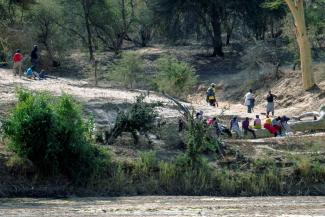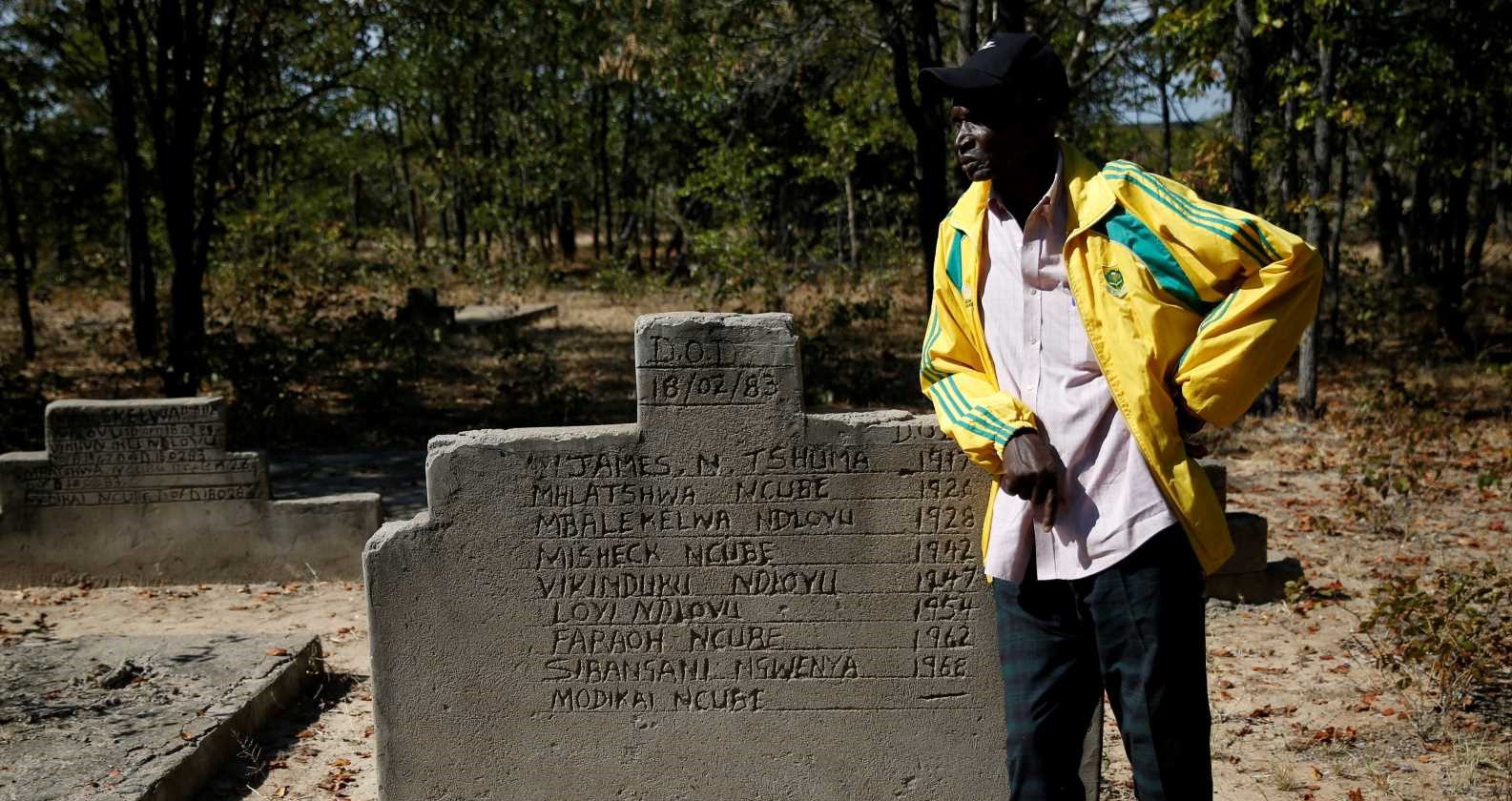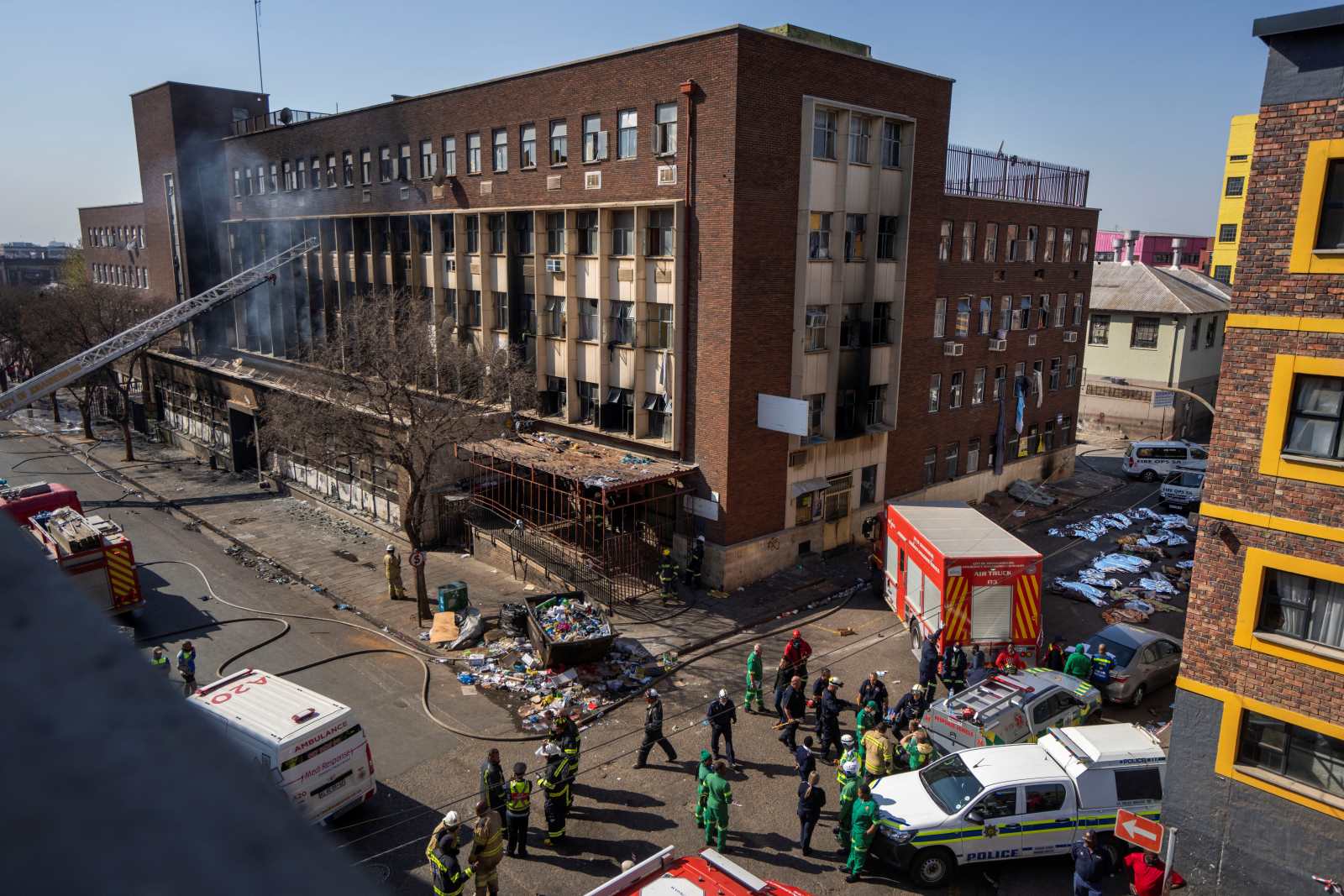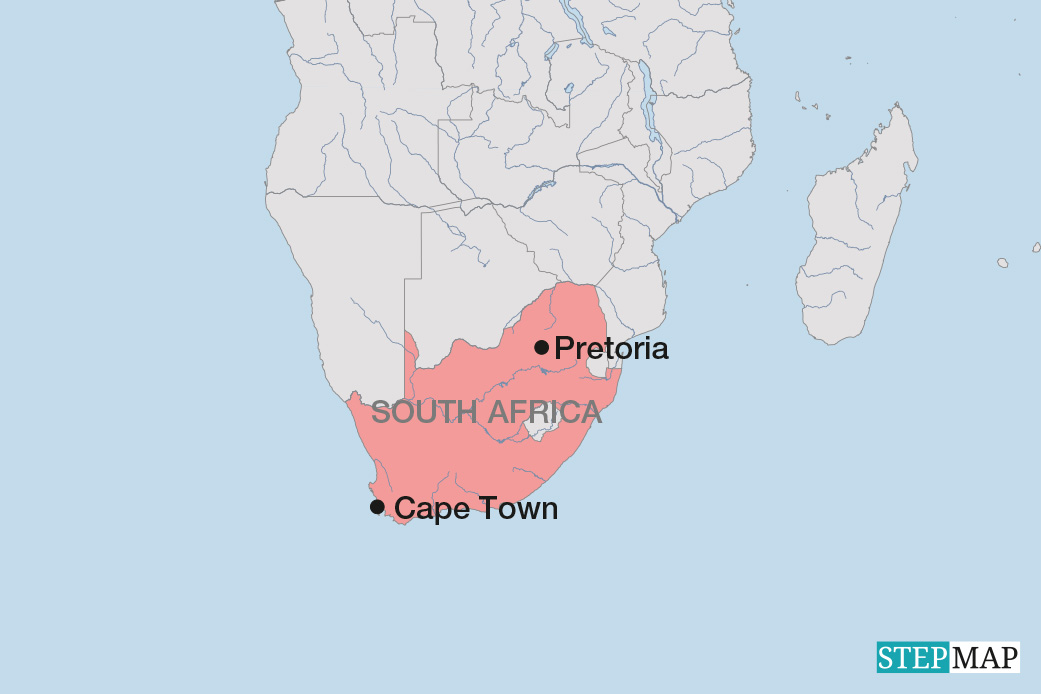Intra-African migration
Unwelcome neighbours

When the militant government of Robert Mugabe began seizing white-owned farms in Zimbabwe without compensation in 2000, it triggered a profound collapse of the national currency, food shortages and hyperinflation. This turbulent period marked the beginning of mass migration to South Africa, with skilled workers, especially teachers, being attracted by the neighbouring country’s recruitment efforts.
“The hype started in the early 2000s. Many Zimbabweans absolutely wanted to go to South Africa because the lucrative jobs were there. First the teachers went, then the tradespeople, then the nurses,” remembers Pious Soko, who came to South Africa in 2007. The pharmacist lives in Johannesburg and now has permanent residence.
But the 2000s were actually not the first time Zimbabweans left in droves for South Africa. “When the colonial bush war in Zimbabwe – then Rhodesia – ended in 1980, thousands of white Zimbabweans rushed to settle in Cape Town. Mugabe won the following elections, and they didn’t want to be ruled by a black president,” says Kudakwashe Magezi, a Zimbabwean political analyst. However, the South African apartheid regime had to fall before the critical mass migration of black Zimbabweans to South Africa began.
Sulla Badza describes her arrival in South Africa in 2002 as a “sweet landing”. The physics teacher, who migrated from Harare, was attracted by many available high-school jobs. “The country was still revelling in the euphoria of the post-Mandela era. But the local black population hardly had any university degrees, and teachers were so rare that even an English teacher was sometimes allowed to teach accounting. We were welcome,” she recalls. “The South African rand was worth almost the same as the US dollar, the electricity and water supply was reliable and streetlamps were not stolen by scrap metal thieves,” Badza remembers.
Between 2000 and 2005, thousands of Zimbabweans seamlessly transitioned into becoming permanent residents and, in some cases, citizens. At the same time, many forged IDs and passports were circulating, sometimes with the complicity of corrupt South African state officials.
Hyperinflation-induced migration
From 2007 onwards, Zimbabwe was hit by hyperinflation of historic dimensions, and what was left of the country’s functioning industries was destroyed. By 2008, the Zimbabwe dollar was virtually worthless, and it would take a wheelbarrow full of banknotes to buy a loaf of bread. By the time elections were due in 2008, it seemed as if the opposition in Zimbabwe would replace the ruling party that had governed the country since 1980. The state-sponsored violence against the political opposition took on horrific proportions. This is when the next wave of mass migration to South Africa began.
But South Africa’s economy was no longer the same. Jacob Zuma became president in 2009 and corruption gripped South Africa on a grand scale. The rand lost value against the US dollar. Youth unemployment skyrocketed.
Pedzisayi is an undocumented migrant who runs a mechanic’s workshop in a Pretoria township. He does not want to reveal his surname. “Hostility towards migrants from Zimbabwe began to build up from 2008. We sensed growing anger – thefts, robberies, rapes and littering of the streets were blamed on migrants from Zimbabwe,” Pedzisayi recalls. “If beggars stood at traffic lights, they were labelled as Zimbabweans. If a supermarket was burgled, Zimbabweans were blamed. Landlords were put under pressure to refuse to let rooms to Zimbabweans. South Africans thought we were taking their jobs.”
The first wave of immigration brought white-collar workers who settled in South Africa’s universities, colleges, government offices and laboratories. Now came thousands of low-skilled labourers, often undocumented, earning a living as miners, as vegetable and chicken vendors on the streets of Johannesburg, or as domestic helps in predominantly white households in Cape Town. “The public perception was that these low-skilled migrants were displacing poor South Africans and overburdening social services,” says Zimbabwean economist Carter Mavhiza.
A decade of hostility
The widespread internet coverage that emerged in South Africa at the time further fuelled resentment against migrants because the hatred also spread online. Harrowing scenes finally erupted in May 2008 when a mob of locals from Alexandria Township in Johannesburg began to riot against migrants from Zimbabwe, Malawi and Mozambique.
Dozens of migrants were hunted down in their homes, lynched, robbed and killed. The most striking scenes of xenophobic atrocities were the images of Ernesto Nhamuave, a Mozambican, who was burnt to death in Alexandria in front of television cameras.
“We started registering with fake, South African-sounding names to avoid the risk of being identified as Zimbabweans. For restaurant jobs, we practised speaking with a South African accent,” says Gadzi, a Zimbabwean vegetable seller who does not want to share her surname.
The ruling African National Congress (ANC) party in South Africa tightened immigration laws from 2010, and more and more Zimbabwean academics and teachers were removed from their jobs to make room for black South African citizens, who graduated from universities in large numbers. The new laws began a decade of intense hostility against all parts of the Zimbabwean population that continues to this day.
South African law grants immigrants, with or without papers, free access to public hospitals and schools. In reality, however, hostility permeates many areas of public life. Sibongile Jongwe is a Zimbabwean mother of three who earns her living by sweeping houses in Sandton, Johannesburg’s wealthiest suburb. She reports: “I was told to pay a bribe of 4000 rand (200 dollars) to the theatre nurses or I would not get a place to give birth in a public hospital. A dozen other pregnant migrant women I know were asked to do the same”.
Operation “Force Out”
New political parties in South Africa, sensing that resentment towards migrants could pay off at the polls, have entered the fray over the past five years. A key figure is Herman Mashaba, a former mayor of Johannesburg and now leader of the Action South Africa party. Its main aim is to deport all undocumented foreigners. Such anti-immigration parties have found a large audience in all South African provinces. The increasingly impoverished population sees migrants as a cause of its problems. Some xenophobic groups have expanded into movements such as Operation Dudula (“Operation Force Out”), which targets both legal and illegal migrants.
Hostility now transcends the boundaries between generations. Pharmacist Pious Soko has experienced it after more than 15 years in South Africa: “A Zimbabwean child born in South Africa who has never set foot in Zimbabwe gets to hear from his classmates every day: You’re not truly South African.”
Audrey Simango is a freelance journalist working in South Africa and Zimbabwe.
thefoodradio@gmail.com












